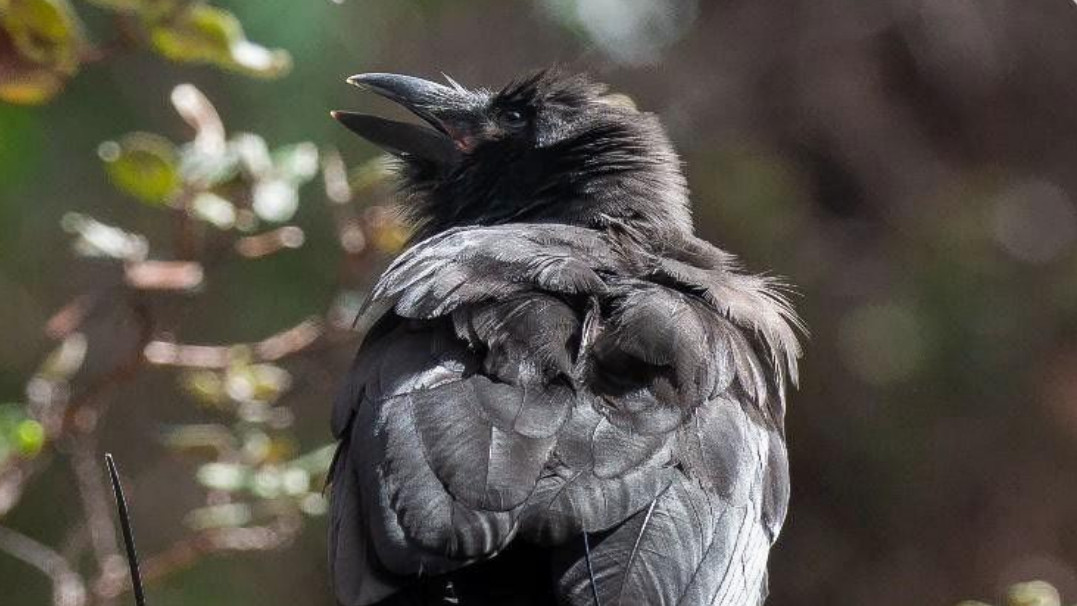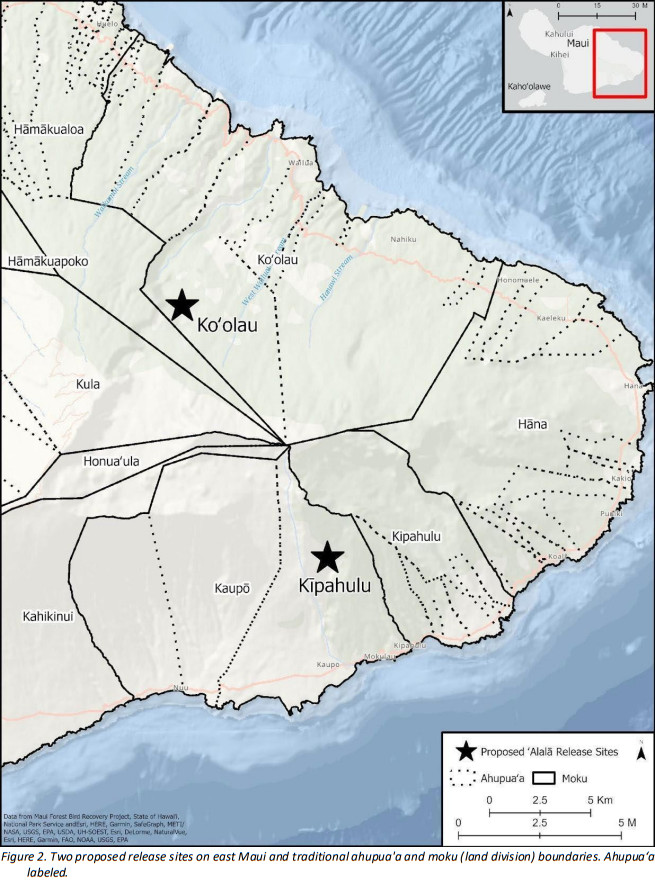This story appears in the above BIVN Update. The video will jump to the associated story when played. (A synthesized voice was utilized in the narration for this story)
(BIVN) – A Draft Environmental Assessment for the pilot release of ʻalalā in East Maui has been published and noticed in the latest issue of The Environmental Notice, as officials look to an island devoid of the ʻio, or the native hawk, that hunted the endangered Hawaiian Crows that were translocated on Hawaiʻi island.
From the Hawaiʻi Department of Land and Natural Resources:
The DLNR Division of Forestry and Wildlife (DOFAW) has prepared a draft Environmental Assessment with the U.S. Fish and Wildlife Service for a pilot release of ʻalalā, or Hawaiian crow, on east Maui. The draft EA is available for public comment for a 37-day period.
The ʻAlalā Project on Maui is a collaborative effort to understand habitat needs and release methods for ‘alalā to survive and breed in the wild, which will be applied to recovery of the species and the return of ‘alalā to its cultural roles in the forests of Hawai‘i. The draft EA evaluates Kīpahulu Forest Reserve and Koʻolau Forest Reserve as potential release sites and also considers impacts to adjacent private and National Park Service lands. Partners involved in the coordination of the pilot release are: Haleakalā National Park, the University of Hawaiʻi Pacific Cooperative Studies Unit Maui Forest Bird Recovery Project, ʻAlalā Project, and the San Diego Zoo Wildlife Alliance.
The multi-stakeholder pilot project would allow managers to evaluate whether ʻalalā will breed in wet forests in east Maui and have better survival in habitat where ‘io or Hawaiian hawk are absent. The draft EA provides background information concerning methods for release of ‘alalā and outlines the proposed action, potential impacts, and strategies to avoid and minimize potential negative effects of the pilot release within the project area of east Maui.
The endangered ‘alalā are connected to essential aspects of Hawaiian forest life. The seeds they eat and disperse support native plant species, and their reintroduction would play an important part in the overall recovery of the Hawaiian forest ecosystem. In Hawaiian culture, ʻalalā are regarded as ʻaumākua and of importance to Native Hawaiian religious and cultural practices.
The ʻalalā is historically found on the island of Hawai’i and currently survives only in captivity at two conservation breeding centers, one on Hawai‘i Island and one in east Maui. Since 1992, there have been three translocation attempts to release ʻalalā on Hawaiʻi Island, one on the leeward side of the island in the 1990s and two translocations using different approaches at Puʻu Makaʻala Natural Areas Reserve on windward Hawai‘i from 2016 to 2020. The attempts were unsuccessful, largely due to predation of released ʻalalā by the ʻio. While the forest conditions in east Maui are typically wetter than the ʻalalā’s historic habitat, east Maui also provides habitat free of ‘io.
The public comment period opened on October 23 and closes on November 29, 2023.
Officials say public comments may also be emailed directly to thealalaproject@gmail.com or mailed to the Department of Land and Natural Resources, Division of Forestry and Wildlife, Attn: ʻAlalā Project, 1151 Punchbowl Street, Room 325, Honolulu, HI 96813.
The DLNR says a public meeting about the draft EA will be held on November 8, 2023, from *6 p.m. to 8 p.m. at Kula Elementary School*.
*new time and location*



by Big Island Video News2:36 pm
on at
STORY SUMMARY
HAWAIʻI - After three failed releases over the years on Hawaiʻi island, the ʻAlalā Project will next attempt to translocate the endangered Hawaiian crow on Maui.